Got a compost bin that’s making your garden smell less like a fragrant bouquet and more like… well, something less pleasant? You’re not alone! Many gardeners running hot compost piles sometimes get an unwelcome odor. But don’t worry, a stinky compost bin doesn’t mean you have to quit composting. We’ve got easy, proven ways to tackle that hot composting odor and get back to enjoying your beautiful, aromatic garden. Let’s dive into how to keep your compost working hard without offending your nose!
Understanding Hot Composting Odor: Why Does It Happen?
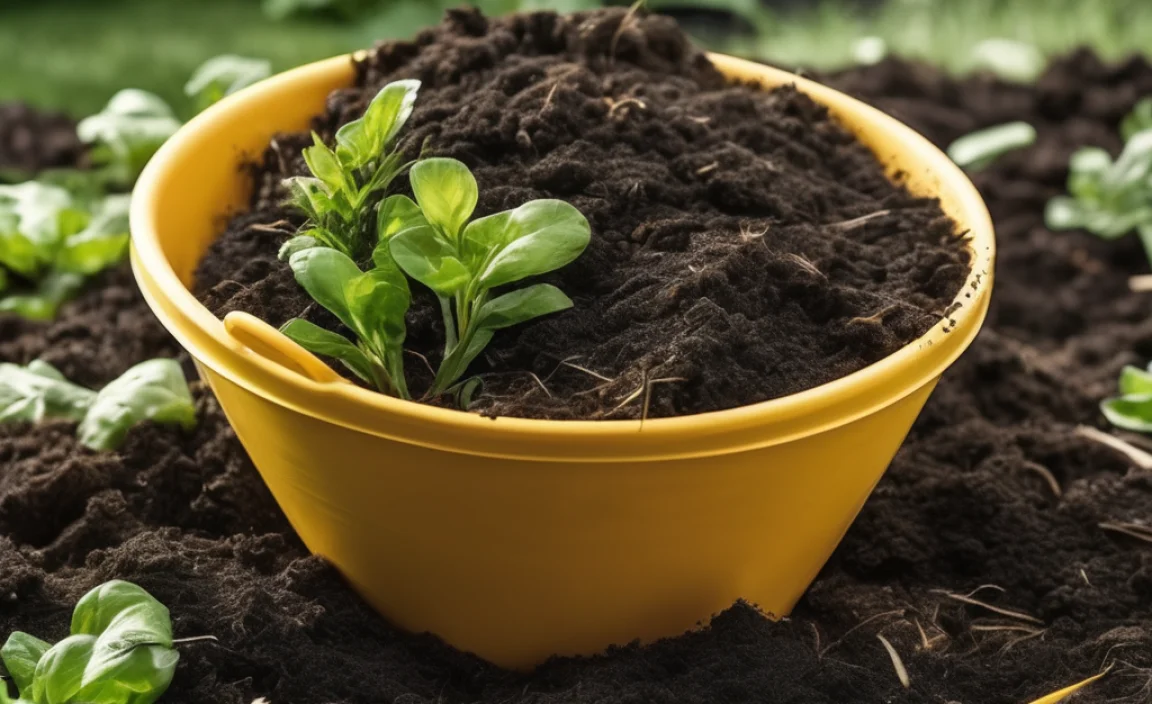
Hot composting is fantastic. It’s a quick way to break down organic materials into nutrient-rich compost, often in just a few weeks. But sometimes, this “hot” process can get a little too enthusiastic, leading to those funky smells. The good news is that most composting odors are a sign that something in your compost pile’s environment is a bit off-balance. They’re usually a cry for help, not a sign of a failed system. By understanding what causes these smells, we can fix them easily.
The primary culprit behind most composting odors is a condition called anaerobic decomposition. This happens when your compost pile doesn’t have enough oxygen. Think of it like a cozy, soggy, and airless space where the wrong kinds of microbes take over. These microbes, the ones that don’t need air (anaerobic bacteria), produce gases like ammonia and hydrogen sulfide, which are responsible for that rotten egg or pungent smell.
So, if your compost smells bad, it usually means it’s too wet, too compacted, or has an imbalance of “greens” and “browns.” Let’s break down the main offenders:
- Too Much Green Material: Greens are nitrogen-rich items like food scraps, grass clippings, and coffee grounds. They are great for heating up the pile, but if they dominate, they can become a slimy, stinky mess.
- Too Much Moisture: Compost needs to be damp, like a wrung-out sponge. If it’s soaking wet, air pockets get filled with water, kicking off anaerobic decomposition.
- Poor Aeration: If your pile is compacted or you’re not turning it regularly, air can’t circulate. This starves the beneficial aerobic microbes (the ones that love air and don’t smell bad) and lets the anaerobic ones thrive.
- Large Amounts of Specific Items: While not always the cause of general bad smell, certain items like meat, dairy, or greasy foods can attract pests and create truly unpleasant odors if not managed carefully or if your compost isn’t hot enough to break them down quickly. For most beginner hot composters, it’s best to avoid these.
The key takeaway here is that a smelly compost pile is often a fixable one. We just need to adjust the conditions inside the pile to favor those friendly, aerobic microbes and keep the anaerobic ones in check. Luckily, most of these fixes are simple and involve basic adjustments to what you’re putting in and how you manage your pile.
Common Hot Composting Odors and Their Fixes
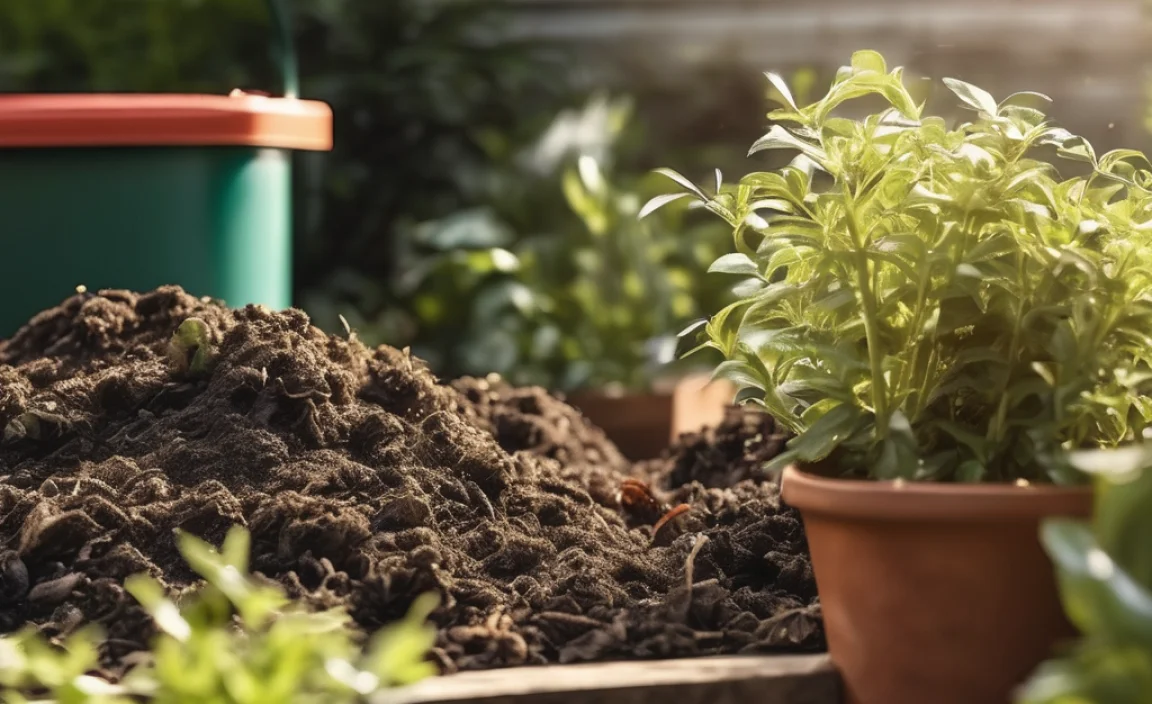
Let’s look at the specific smells you might encounter and what they tell you about your compost pile:
1. The Rotten Egg Smell (Hydrogen Sulfide)
This is probably the most infamous compost odor. If your compost smells like rotten eggs, it’s a dead giveaway that your pile is too wet and lacks oxygen. Hydrogen sulfide gas is produced when organic matter decomposes in an anaerobic (oxygen-starved) environment, often due to excessive moisture trapping air out.
What’s Happening:
Your pile is waterlogged. The water fills up all the air pockets, preventing the aerobic microbes that need oxygen from doing their work. This leaves the stage open for anaerobic bacteria to produce nasty gases.
The Fix:
Add More Browns: The immediate remedy is to introduce dry, carbon-rich “brown” materials. Things like shredded newspaper, cardboard, dry leaves, straw, or sawdust will soak up excess moisture and create air pockets. Aim for a good balance of greens and browns. A good starting ratio is about 2 parts browns to 1 part greens by volume, though this can vary.
Aerate Thoroughly: Turn your compost pile! Use a pitchfork or a compost aerator tool to fluff up the material. This introduces oxygen, which is vital for aerobic decomposition. If your pile is very dense, breaking it apart and rebuilding it can make a huge difference.
Check Moisture Levels: Squeeze a handful of compost. It should feel like a damp sponge – moist, but no water should drip out when squeezed firmly. If it’s dripping, it’s too wet, and turning it with browns will help.
2. The Ammonia Smell (Ammonia/Urine-like)
An ammonia smell usually indicates you have too much nitrogen-rich “green” material in your compost pile. While nitrogen is essential for heating up the compost and for microbial activity, too much of it can cause ammonia gas to be released into the air.
What’s Happening:
An overload of greens means there’s an abundance of nitrogen. The microbes break down this nitrogen quickly, and a byproduct is ammonia gas. This often happens after adding large amounts of grass clippings or fresh kitchen scraps without enough carbon materials to balance things out.
The Fix:
Add More Browns: Just like with the rotten egg smell, adding more carbon-rich brown materials is the primary solution. Shredded cardboard, dry leaves, straw, or wood chips will absorb the excess nitrogen and help balance the C:N (Carbon to Nitrogen) ratio. Aim to mix them in thoroughly.
Aerate the Pile: Turning the compost helps to release the ammonia gas into the air rather than letting it accumulate. It also helps mix in the browns you’ve added and introduces oxygen.
Layering is Key: When adding fresh materials, try to mix greens and browns rather than dumping large amounts of one type. For instance, if you add a bucket of grass clippings, immediately add a layer of shredded leaves or newspaper on top.
3. The Sour or Putrid Smell
This is a more general, unpleasant, and often pungent odor that can arise from a combination of factors, usually pointing to an anaerobic and overly wet environment.
What’s Happening:
This smell is a blend of gases produced when decomposition goes wrong. It’s essentially your compost pile telling you it’s become a swampy, oxygen-deprived zone where multiple types of decomposers are struggling, and the less pleasant ones are winning.
The Fix:
Rebuild the Pile: For severe sour smells, the best solution might be to completely empty the bin. Spread the material out, break up any compacted clumps, and mix in a generous amount of dry browns. Then, rebuild the pile in layers, incorporating browns and greens as you go, ensuring good aeration. This is like giving your compost pile a fresh start.
Improve Drainage: Ensure your compost bin isn’t sitting in a puddle. If it’s a bin with a solid bottom, consider drilling some drainage holes or placing it on a permeable surface like gravel or bare soil. Adequate airflow at the bottom is crucial.
Turn Regularly: Make it a habit to turn your compost pile at least once a week, or more often if you’re adding a lot of new material. Regular turning is the best preventative measure against sour smells.
The Science Behind a Sweet-Smelling Compost Pile: The Carbon-to-Nitrogen Ratio
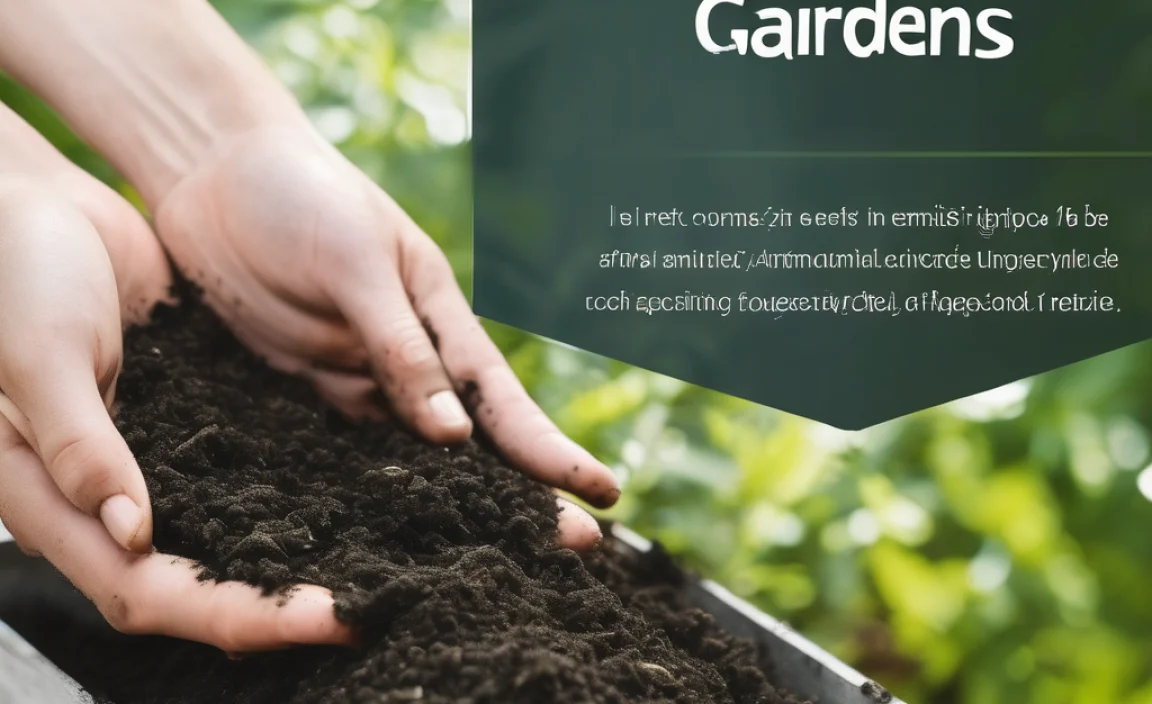
Understanding the Carbon-to-Nitrogen (C:N) ratio is fundamental to successful hot composting and avoiding odors. Microbes need both carbon (for energy) and nitrogen (for protein and reproduction) to thrive and break down organic matter efficiently. When this ratio is balanced, the decomposition process is fast, hot, and odor-free, powered by aerobic microorganisms.
Greens = Nitrogen-Rich Materials: These are typically wet, fresh materials. They provide essential nitrogen. Examples include:
- Fresh grass clippings
- Fruit and vegetable scraps
- Coffee grounds and tea bags
- Manure (from herbivores)
- Plant trimmings
Browns = Carbon-Rich Materials: These are typically dry, woody materials. They provide carbon and also help create air pockets and absorb excess moisture.
- Shredded newspaper and cardboard
- Dry leaves
- Straw and hay
- Wood chips and sawdust
- Twigs and small branches
The Ideal Ratio: For hot composting, the ideal C:N ratio is generally between 25:1 and 30:1 (by weight). This means for every part of nitrogen, you need about 25 to 30 parts of carbon. It’s hard to measure weight, so the rule of thumb is to aim for a volume ratio of about 2 to 3 parts browns to 1 part greens.
Why It Matters for Odor:
- Too Much Nitrogen (Too many Greens): Leads to ammonia smell. The excess nitrogen is released as gas.
- Too Little Nitrogen (Too many Browns): The compost pile may not heat up sufficiently, and decomposition will be very slow, but it generally won’t create bad odors.
- Anaerobic Conditions (Lack of Air/Too Wet): Often happens when greens become dense and waterlogged, creating sludge. This leads to rotten egg smells and sourness. Browns help prevent this by creating structure and air pockets.
By consciously balancing your greens and browns, you ensure that the aerobic microbes have the fuel they need to work efficiently and that your pile maintains the right moisture and aeration, preventing the conditions that lead to those unpleasant odors. Think of it as feeding your compost pile a well-balanced meal!
Practical Steps to Implement and Prevent Odors
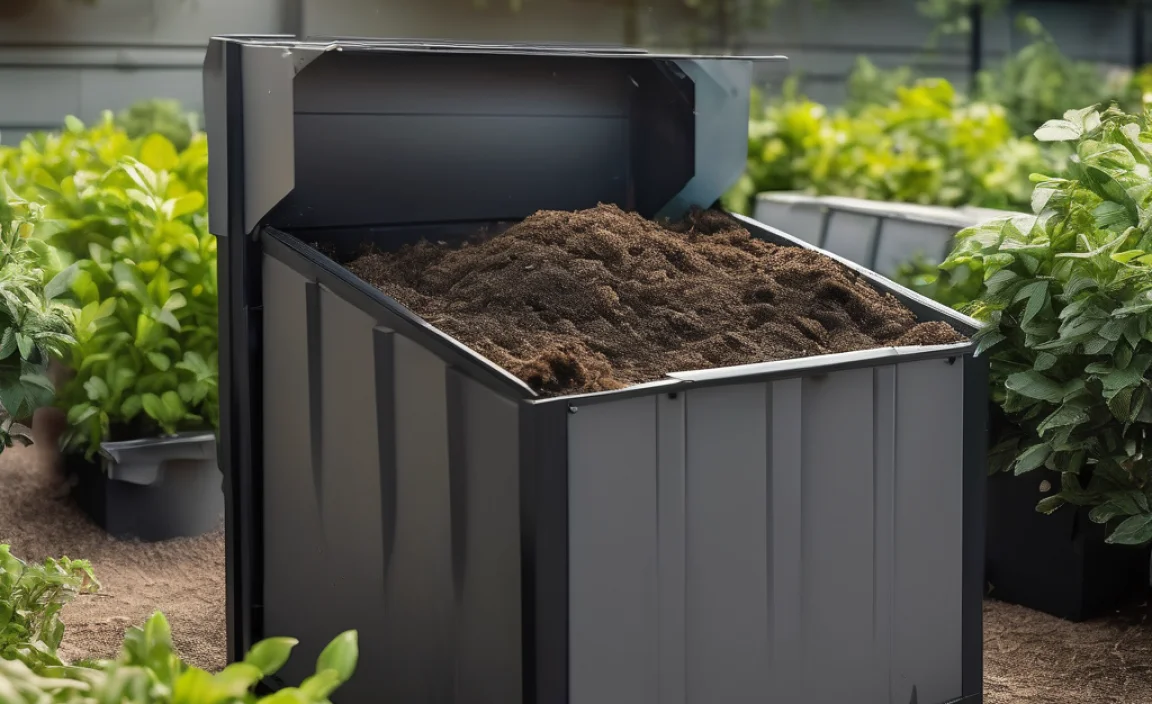
Now that you know what causes the smells, let’s put it into practice. Here’s a step-by-step guide to managing your hot compost pile for optimal performance with no odors:
-
Start Right: Layering Your Materials
When building a new hot compost pile or adding fresh materials to an existing one, it’s crucial to layer greens and browns. Begin with a layer of coarse brown material (like twigs or wood chips) at the bottom for drainage and aeration. Then, alternate layers of green materials (food scraps, grass clippings) with brown materials (shredded leaves, cardboard). A good starting point is a layer of browns, then a layer of greens, then browns, and so on. Aim for roughly twice as much volume of browns as greens.
-
Maintain Proper Moisture Levels
Your compost pile should be as moist as a wrung-out sponge – damp but not soaking wet. If you grab a handful and squeeze, only a drop or two of water should come out. If it’s too dry, decomposition slows down. If it’s too wet, anaerobic conditions and odors can develop. Add water if it’s too dry, and add more browns if it’s too wet.
-
Aerate Regularly: The Key to Oxygen
This is where the “hot” in hot composting really happens, and it’s key to preventing smells. Aerobic microbes need oxygen to break down organic matter quickly and without odor. Turn your compost pile at least once every 7-14 days. You can use a pitchfork, a compost aerator tool, or even just fork it apart and rebuild it. Turning also helps mix materials, distribute moisture, and prevent compaction.
Tip: For a truly hot pile (130-160°F or 55-71°C), turning every 4-7 days is ideal for speeding up the process and ensuring even heating and decomposition.
-
Chop Materials Before Adding
Smaller pieces break down faster. If you’re adding large items like corn stalks or thick vegetable peels, chop them up into smaller bits. This increases the surface area for microbes to work on, leading to quicker decomposition and better heat generation, which helps prevent odors.
-
Bury Food Scraps
When adding kitchen scraps (your green materials), always bury them in the center of the pile or cover them with a layer of brown material. This prevents fruit flies and other pests from being attracted to your compost and discourages any initial odors from escaping easily.
-
What NOT to Compost (Especially for Beginners)
While experts might compost almost anything successfully, beginners should avoid certain items that can cause significant odor issues or attract pests:
- Meat, fish, and bones
- Dairy products
- Oily or greasy foods
- Diseased plants
- Pet waste (from cats or dogs)
These items decompose slowly, can attract pests like rodents and flies, and often lead to very unpleasant smells if not managed in a very hot, fast compost system. Focus on plant-based materials initially.
Choosing the Right Compost Bin for Odor Control
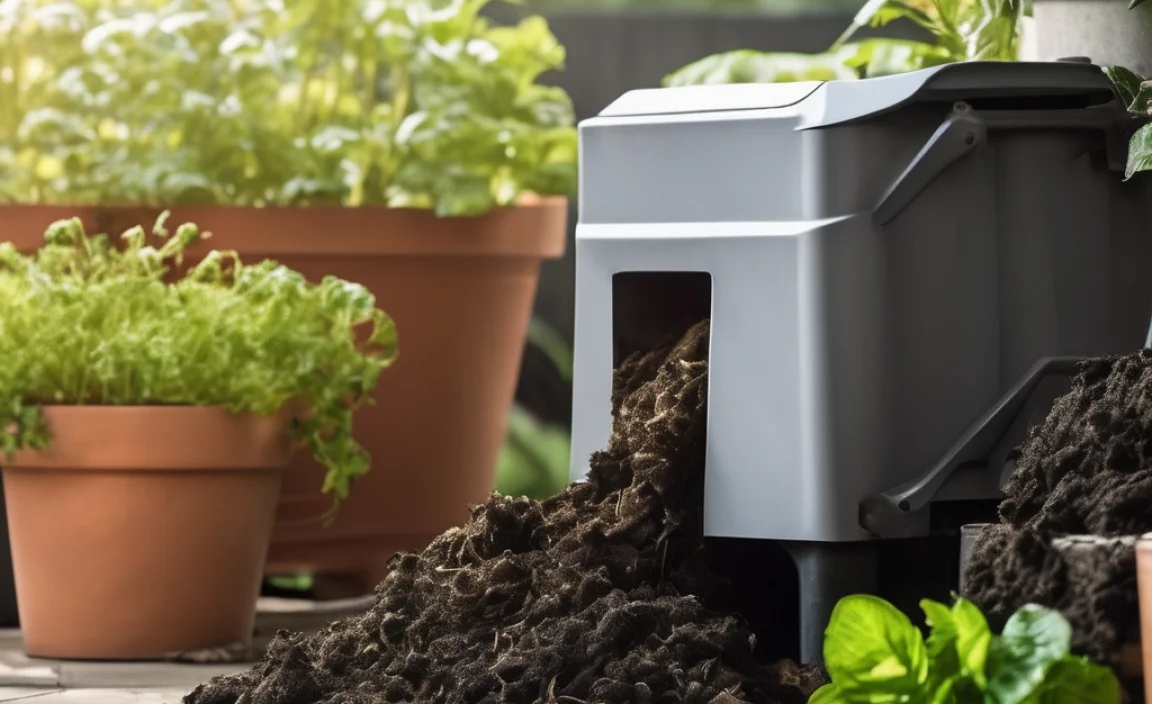
The type of compost bin you use can significantly impact airflow and moisture management, both of which are critical for preventing odors. While you can hot compost in a simple open pile, enclosed bins often offer better control.
Types of Compost Bins and Their Odor Implications:
| Bin Type | Odor Control Features | Pros | Cons |
|---|---|---|---|
| Open Pile | Relies entirely on manual turning for aeration. Requires good layering. | Simple, no cost, large capacity. Easy to turn. | More susceptible to drying out or getting too wet. Can look messy. May attract pests if not managed well. |
| Enclosed Bins (Plastic/Wood) | Contain materials, may have small ventilation holes. Often have lids. | Neater appearance, retain heat and moisture well. Can deter pests. | Aeration can be limited without manual turning or specific designs. If too wet or compacted, can become anaerobic. |
| Tumbler Bins | Designed for frequent turning by rotating the drum. Seals the contents. | Excellent aeration with regular tumbling. Fast composting possible. Keeps pests and odors contained. Easy to mix. | Smaller capacity, can be expensive. May require more effort to empty. Can overheat and dry out if not monitored. |
| Worm Bins (Vermicomposting) | Not technically hot composting, but an alternative. Uses worms. | Produces excellent compost (worm castings). Minimal odor if managed correctly. Good for small spaces. | Cannot handle large volumes of material. Cannot process large amounts of greens quickly. Best for food scraps and paper. |
For hot composting specifically, where aeration is king, an open pile or a tumbler are often the easiest for beginners to manage effectively regarding odor. If you have an enclosed bin, be extra diligent about turning and ensuring it’s not compacted.
A well-ventilated design is crucial. Look for bins with ample air vents or consider modifying a solid bin by drilling extra holes. The goal is to allow air to circulate freely through the entire pile. For tumblers, the constant motion is a natural aerator. The key is that good airflow prevents the anaerobic bacteria from getting a foothold and creating those stinky byproducts.
Troubleshooting Persistent Hot Composting Odors
Sometimes, even with the best intentions, your compost pile might still surprise you with an odor. Don’t despair! Here are some common troubleshooting steps for persistent issues.
Is the Pile Actually Hot?
A key feature of hot composting is that it generates significant heat (130-160°F or 55-71°C), which kills weed seeds and pathogens. If your pile isn’t heating up, it might be too wet, too dry, have too much or too little nitrogen, or lack aeration. Odors can arise if decomposition is slow and starts from the bottom in anaerobic conditions.
Troubleshooting Steps:
- Check Temperature: Use a compost thermometer. If it’s not hot, assess the moisture, C:N ratio, and aeration.
- Adjust C:N Ratio: If it’s too cold, it might need more greens (nitrogen). If it’s not heating up from greens alone, it might need more browns to build structure and allow air pockets.
- Add Water/Dryer: If too dry, add water. If too wet, add browns and turn vigorously.
Is it Due to Specific Materials?
Sometimes, a particular batch of food scraps or yard waste can throw off the balance. For example, adding a very large amount of fresh grass clippings all at once is a common culprit for ammonia smells.
Troubleshooting Steps:
- Isolate the Issue: Try to identify if the smell coincided with adding a specific type of material in bulk.
.lwrp.link-whisper-related-posts{
margin-top: 40px;
margin-bottom: 30px;
}
.lwrp .lwrp-title{}.lwrp .lwrp-description{
}
.lwrp .lwrp-list-container{
}
.lwrp .lwrp-list-multi-container{
display: flex;
}
.lwrp .lwrp-list-double{
width: 48%;
}
.lwrp .lwrp-list-triple{
width: 32%;
}
.lwrp .lwrp-list-row-container{
display: flex;
justify-content: space-between;
}
.lwrp .lwrp-list-row-container .lwrp-list-item{
width: calc(25% – 20px);
}
.lwrp .lwrp-list-item:not(.lwrp-no-posts-message-item){max-width: 150px;
}
.lwrp .lwrp-list-item img{
max-width: 100%;
height: auto;
object-fit: cover;
aspect-ratio: 1 / 1;
}
.lwrp .lwrp-list-item.lwrp-empty-list-item{
background: initial !important;
}
.lwrp .lwrp-list-item .lwrp-list-link .lwrp-list-link-title-text,
.lwrp .lwrp-list-item .lwrp-list-no-posts-message{}@media screen and (max-width: 480px) {
.lwrp.link-whisper-related-posts{}
.lwrp .lwrp-title{}.lwrp .lwrp-description{
}
.lwrp .lwrp-list-multi-container{
flex-direction: column;
}
.lwrp .lwrp-list-multi-container ul.lwrp-list{
margin-top: 0px;
margin-bottom: 0px;
padding-top: 0px;
padding-bottom: 0px;
}
.lwrp .lwrp-list-double,
.lwrp .lwrp-list-triple{
width: 100%;
}
.lwrp .lwrp-list-row-container{
justify-content: initial;
flex-direction: column;
}
.lwrp .lwrp-list-row-container .lwrp-list-item{
width: 100%;
}
.lwrp .lwrp-list-item:not(.lwrp-no-posts-message-item){max-width: initial;
}
.lwrp .lwrp-list-item .lwrp-list-link .lwrp-list-link-title-text,
.lwrp .lwrp-list-item .lwrp-list-no-posts-message{};
}

I am passionate about home engineering. I specialize in designing, installing, and maintaining heating, ventilation, and air conditioning systems. My goal is to help people stay comfortable in their homes all year long.
